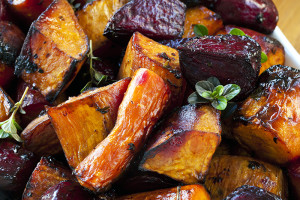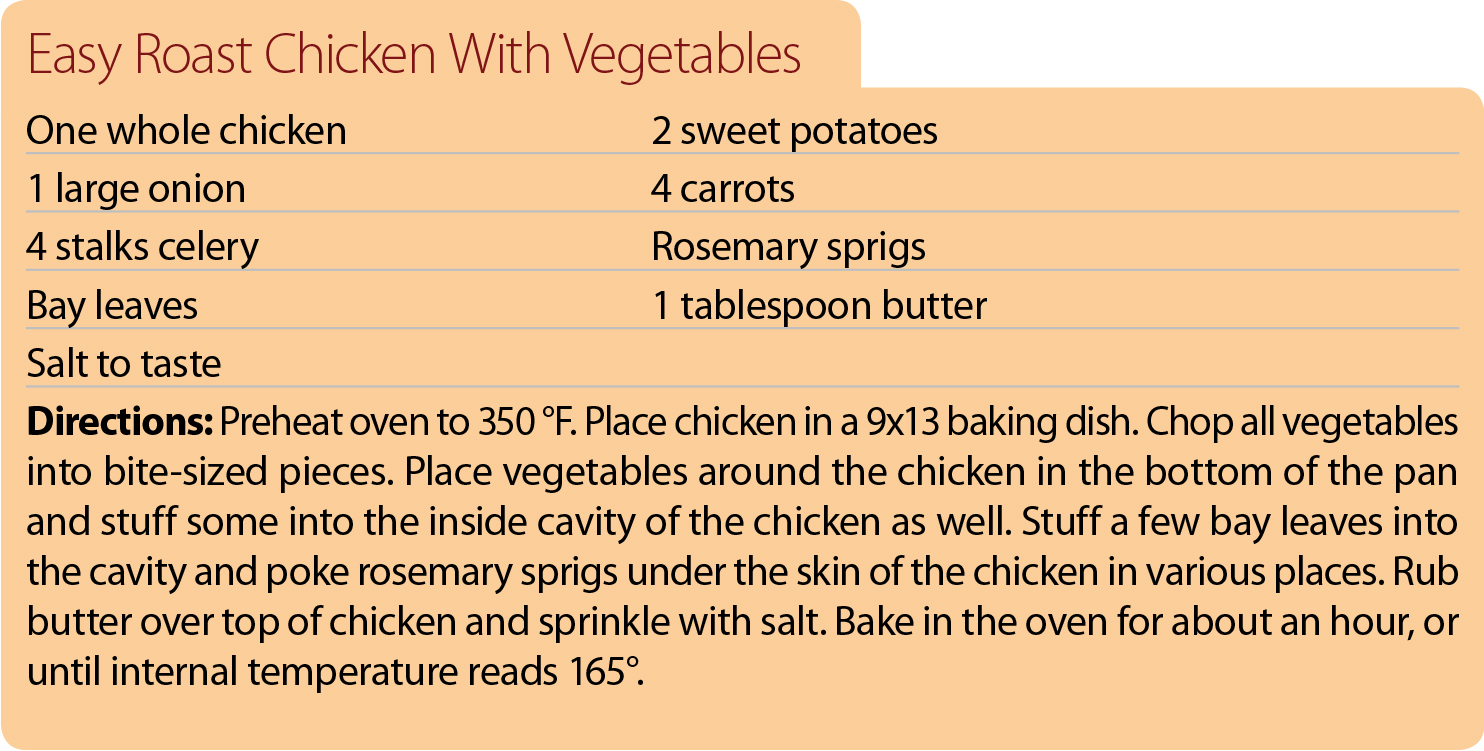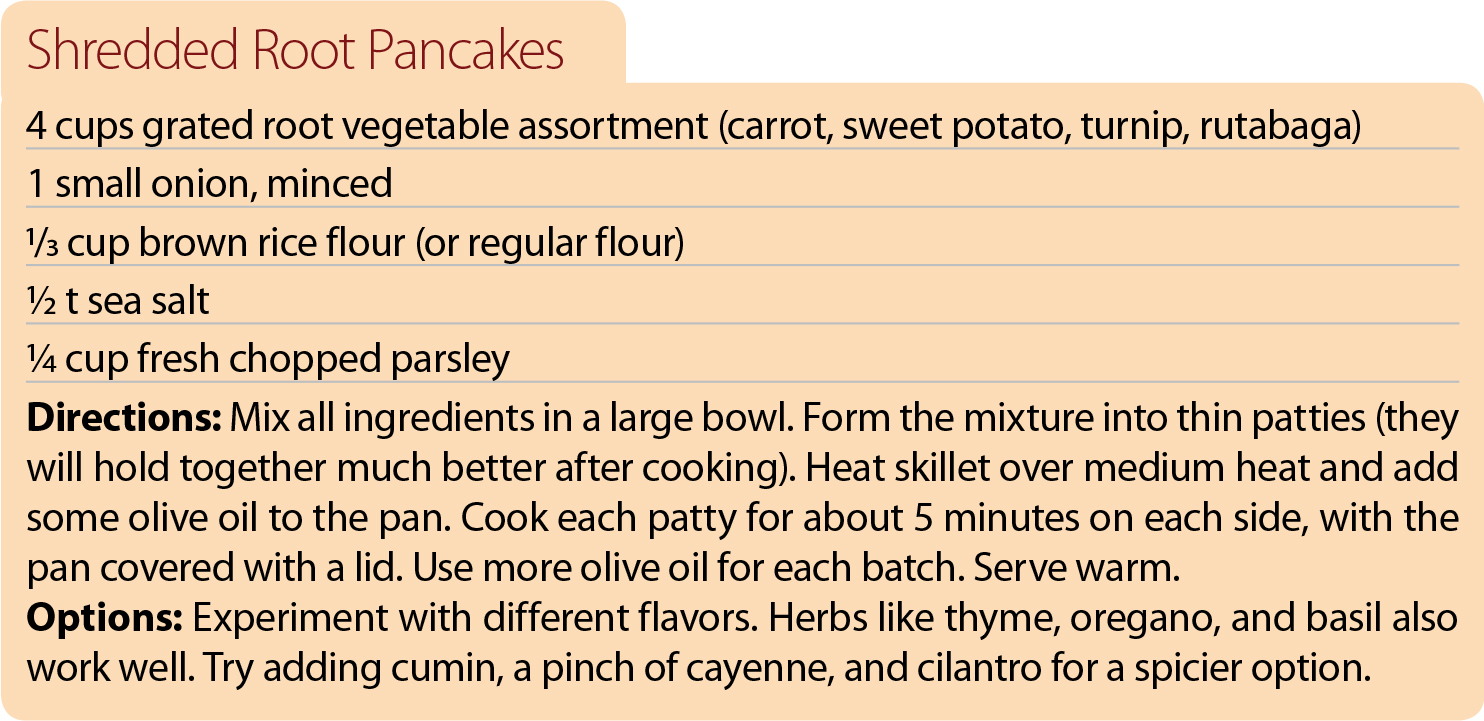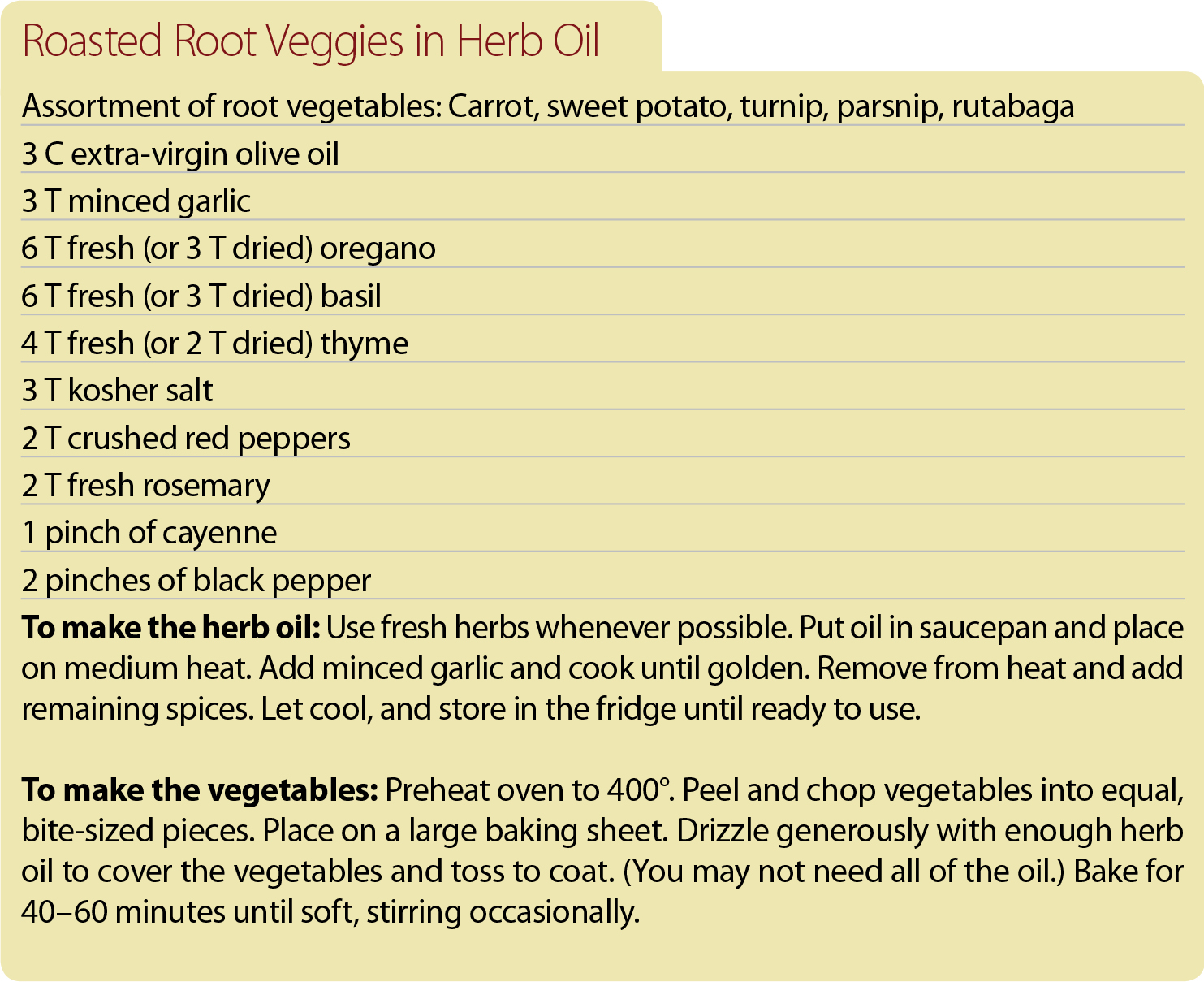5 Healthy Comfort Foods: Make These Root Vegetables Part of the Mix
Packed full of nutrients, root vegetables are hearty, delicious, and healthy comfort foods. Here's the scoop on how they help, along with three tasty recipes.
When we think of healthy comfort foods, we often think of warm roasts, stews, and other satisfying dishes—the types of foods that typically fill our tables as part of our Thanksgiving feasts. And what ingredients do many of these dishes share? Root vegetables, which happen to be jam-packed with healthy nutrients to fight disease and keep you healthy.
5 Healthy Comfort Foods
#1. Onions
One of the most versatile vegetables, onions can be used in almost any savory dish and add wonderful flavor to cooking. Research shows that the more onions you include in your recipes, the better. They are full of powerful nutrients, particularly phytochemicals like flavanols.[1] Flavanols are important antioxidants implicated in the prevention of diseases like cancer, high blood pressure, and more.[2] Specifically, onions have high levels of quercetin, a natural antihistamine, and red onions are rich in anthocyanin.[1,2]
Multiple studies have shown onion in the diet to be protective against stomach cancer, brain cancer, and breast cancer, as well as leukemia.[2,3]
Onions are also well-known for their antihistamine actions, which allow them to protect against allergic reactions. Some other health benefits of onions include inhibiting platelet aggregation, keeping blood sugar under control, fighting high blood pressure, lowering cholesterol, and serving as an antifungal and antibacterial agent.[3]
Try using chopped sweet onions as a condiment on tacos, curry, or salad. Onions make a wonderful flavor base; add them to your pan before the rest of your ingredients, or add to broth and sauces for rich flavor. Healthy nutrients are most concentrated in the outer layers of the onion, so remove as little as possible when peeling.[2]
#2. Carrots
The bright, orange color of carrots is associated with powerful health benefits. Carotenoids, responsible for the pigment in carrots, promote vitamin A activity, have immune-boosting effects, and decrease the risk of degenerative diseases. Carotenoids may be an inhibitor of Alzheimer’s disease.[4]
Carotenoids are also powerful antioxidants that fight cancer.[4] Carrots contain about 51 percent of the dietary intake of α-carotene, and large amounts of β-carotene as well.[5] Higher carotenoid levels are associated with reduced risk of cancers, via a proposed mechanism of reduced oxidative stress and inflammation. One study found that people who drank eight ounces of carrot juice daily (about five carrots) had carotenoid levels at a level previously determined to protect against breast cancer.[4]
These cancer-fighting root vegetables are delicious raw or cooked. Try not to peel your carrots if possible, as the richest nutrients are found in the skin.[4]
#3. Turnips
Turnips are part of the Brassica family, also known as cruciferous vegetables. Cruciferous vegetables are exceptional for health; they are known to be particularly effective for fighting cardiovascular disease and certain cancers.[6] Turnips, like other Brassica veggies, are good sources of phenolic compounds that have antioxidant, antimicrobial, and anticancer activities.[7] An important compound found in turnips is brassinin. Brassinin inhibits the growth and proliferation of cancer cells, which makes it a powerful tool for fighting tumors.[8,9]
With their purple skin and crunchy, white core, turnips can be eaten raw, where they offer a crisp texture and peppery flavor. Try using turnip wedges to dip in hummus or another healthy veggie dip. They are also wonderful cooked into soups or stews, roasted, or mixed into mashed potatoes for an added zing.
#4. Rutabagas
A rutabaga is a cross between a turnip and a cabbage, and it also belongs to the Brassica family of vegetables. High in antioxidants that fight cancer as well as vitamins, minerals, and fiber, rutabagas are more nutritious than many more common root vegetables like potatoes. In one study, rutabaga extracts inhibit tumor cell proliferation and promotes cancer cell death. Researchers conclude that, “rutabaga has potential as a nutritional supplement in cancer prevention.”[10]
Rutabagas are mild in flavor and can serve as a healthier alternative to potatoes in recipes. Roasted or baked rutabagas are a delicious addition to a meal and are great with a medley of other root vegetables to pair with a meat dish, such as roast chicken.

Beets and parsnips are other root veggies that are good sources of folate, which aids in producing DNA and RNA and lowers the risk of delivering a baby with neural tube defects.
#5. Sweet Potatoes
Like carrots, sweet potatoes get their orange coloration from carotenoids. β-carotene is a potent antioxidant important for cancer prevention.[11] Other antioxidants found in sweet potatoes include anthocyanins, which have powerful capabilities for treating high blood pressure.[12] Full of vitamins, minerals, and fiber, sweet potatoes have also been shown to reduce the glycemic response, meaning these vegetables can be used to help control blood sugar.[13]
Try mashed sweet potatoes or simply bake a sweet potato as a side to your meal. Sweet potato can be pureed to incorporate into sauces and condiments, and it blends well into soups or stews for rich flavor.



1. J Agric Food Chem. 2007 Dec 12;55(25):10067-80.
2. Phytother Res. 2002 Nov;16(7):603-15.
3. J Med Food. 2009 Apr;12(2):374-82.
4. J Food Sci Technol. 2012 Feb;49(1):22-32.
5. Nutr Cancer. 2012;64(2):331-41.
6. J Chromatogr A. 2009 Sep 18;1216(38):6611-9.
7. Food Chem. 2015 Apr 15;173:185-93.
8. Int J Oncol. 2012 Mar;40(3):816-24.
9. Toxicol In Vitro. 2014 Aug;28(5):909-15.
10. J Med Food. 2013 Aug;16(8):749-59.
11. Molecules. 2011 Feb 18;16(2):1710-38.
12. Adv Food Nutr Res. 2007;52:1-59.
13. Food Funct. 2014 Aug 20;5(9):2309-16.
Originally published in February 2016 and updated.


 Ask the EN Experts March 2025
Ask the EN Experts March 2025  Vegan Diet Better Than Omnivore Diet for Cardiovascular Health
Vegan Diet Better Than Omnivore Diet for Cardiovascular Health 
Besides providing a bevy of nutritional benefits, fresh onions and carrots are staples of classic comfort-food stews and soups.
© Ronald Pickering | Dreamstime.com